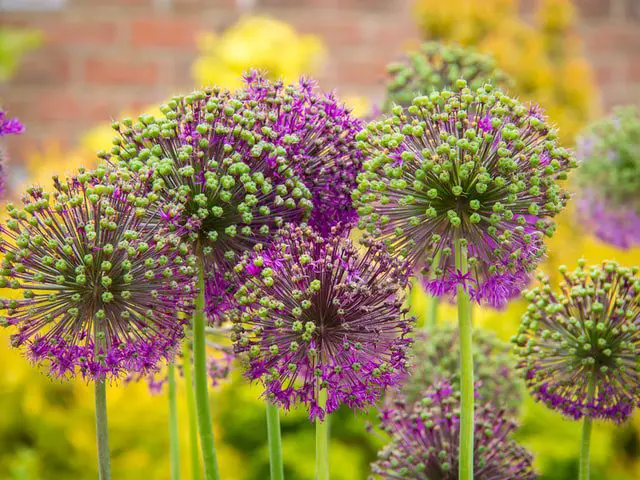
Last updated on May 20th, 2023 at 02:54 pm
Allium flowers or ornamental onions are a genus (Allium) of several hundred attractive flowering plants with spherical blooms. They belong to the family Amaryllidaceae. Allium flowers are bulbous, herbaceous perennial plants with specific garlic or onion odor from basal foliage. Allium flowers are sometimes referred to as flowering onions or onion flowers.
The flowers are small (~2.5 cm), six-petalled, and grouped in a cluster at the top of the leafless stem. Allium flowers come in various colors, shapes, and sizes. The flower color can be white, red/burgundy, purple/violet, pink, white or yellow. The flower stem is elegant, slim, and erect, and the bloom is showy and long-lasting.
Depending on the species, the flower can have a star, bell, cup, or tubular shape, and the stem can be from 15 cm to 1.5 m tall. Some varieties have domed or flat-topped blooms.
Etymologically, the genus name Allium is of Latin origin and means garlic which, along with onion, leek, chives, scallion, and shallot, is a type of allium plant. According to some sources, the root of the word Allium is the Greek word “aleo,” meaning “to avoid”—a reference to the strong odor of the plant.
Due to this strong odor, Christian myth associates the allium flower with the Devil. According to this myth, the flower blossomed where the Devil left his footprints in the soil on the way out from the Garden of Eden. His left foot produced garlic allium flowers, and his right foot produced onion allium flowers.
Many allium flower species are native to the northern hemisphere—North America and Eurasia. Some allium species grow on high mountain peaks, such as Mount Everest. Only a small number of allium species are found in South America (Chile and Brazil) and parts of Africa.
Some allium plants (including onion) are among the oldest cultivated plants in the world, with evidence that they have been grown in India, China, and the Middle East. In the late 19th century, Russian botanists collected allium species from Central Asia and began cultivating them in the Botanical Garden in St. Petersburg. The British horticulturalists, intrigued by the beauty of these flowering plants, went on to new expeditions and discovered other allium flower varieties.
In their natural habitat, they prefer dry forests and mountain regions. As cultivated plants, they have a wide geographical distribution, and they sometimes behave like weeds. Most allium flowers bloom between late spring and early summer.
What does the Allium flower symbolize?
The symbolism of unity comes from the fact that the flowers are clustered into a single spherical bloom and develop from a single bulb. Onion is one of the better-known members of the genus of allium flowers. The word “onion” comes from the Latin word “onio,” meaning “unity” or “one.”
Ancient Egyptian inscriptions and drawings indicate that allium plants were prominently used in their culture. The Ancient Egyptians were fascinated by the spherical shape of the allium flower and saw it as a symbol of the universe. In their rituals, they also appreciated the layers and the concentric rings of a sliced onion plant (Allium cepa), in which they see a symbol of eternal life.
In the symbolic flower language of the Victorian Era, the allium flower meaning was “you are strong,” “you are elegant,” and “you are perfect.”
Allium flowers (especially the common onion or Allium cepa) have often been ascribed the power to bring money, wealth, and prosperity. It is believed that dreaming of Allium sativum (common garlic) announces good fortune. The Bolognese used to buy allium bulbs at the festival of St. John, believing that this would protect them from falling into poverty. Another allium flower meaning is patience—it is derived from the fact that these flowers bloom slowly.
In Sanskrit, the sacred language of Ancient India, the word for garlic allium means “slayer of monsters.” In many countries, allium is believed to ward off bad luck, evil forces (including witches, ware-wolves, vampires, and the Devil), sickness, and disease.
In Germany, allium is known as ‘the ordinary man’s armor.’ The 16th-century botanist Clusius wrote that the German miners used allium as a powerful ally. They believed that it defended them from the assaults of impure spirits which often roamed in and around mines.
All in all, the allium flowers symbolic meanings are:
- good fortune
- prosperity
- unity
- patience
- humility
- grace
Meaning of the Allium flower colors
Violet or Lavender color
The violet or lavender color of an allium flower is a symbol of elegance, grace, spirituality, mysticism, and wisdom.
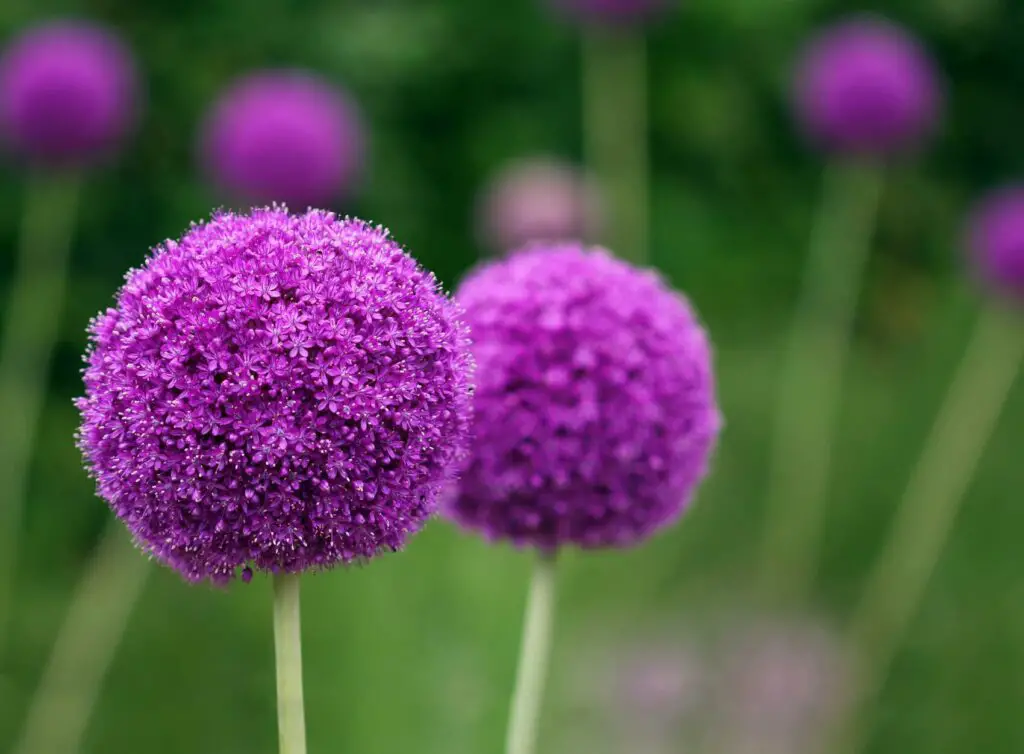
Purple color
Purple has traditionally been associated with royalty and high status. Purple allium flowers are an expression of admiration, respect, and honoring tradition.
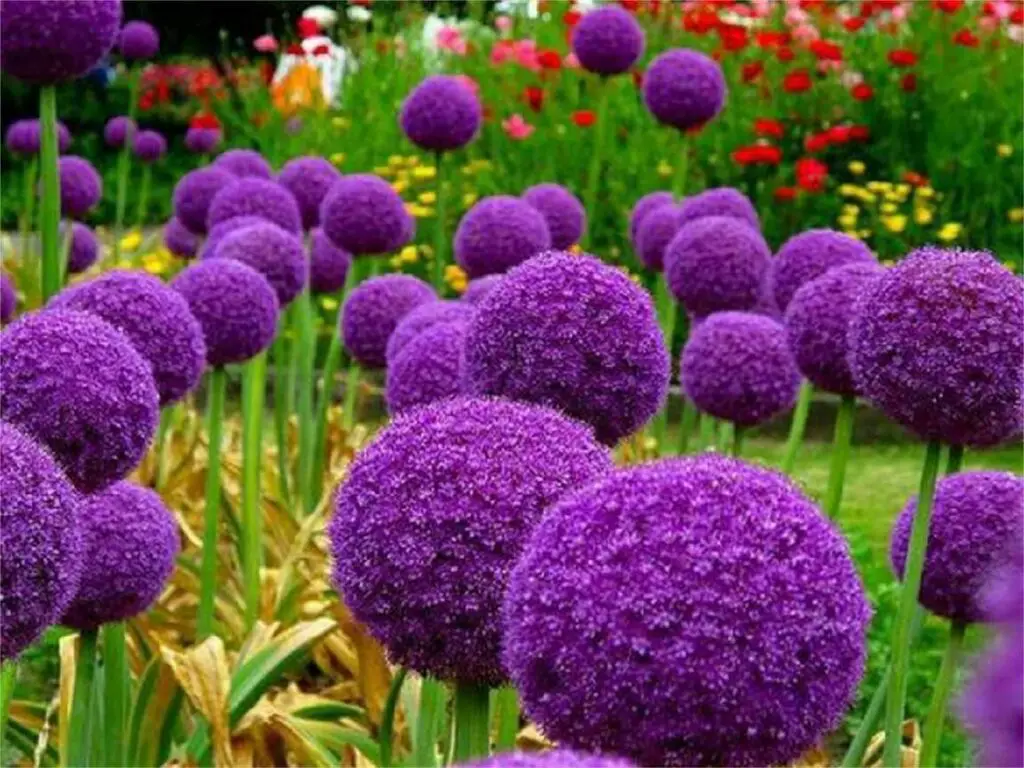
Yellow color
The yellow or golden color of allium flowers symbolizes life energy, joy, happiness, cheer, and friendliness.
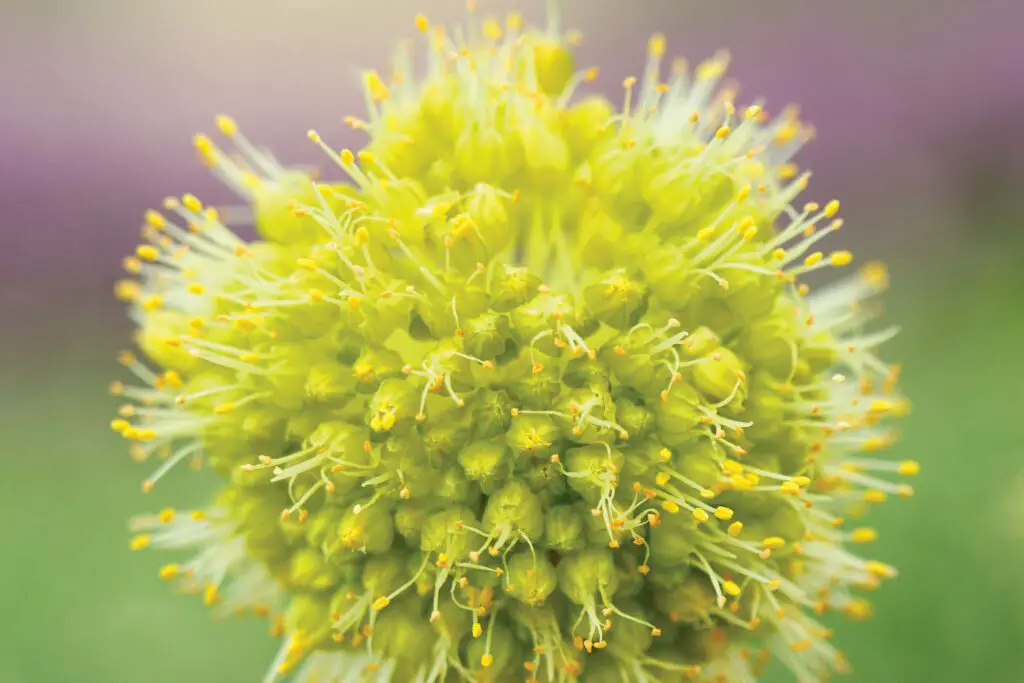
White color
White allium flowers are usually seen as representing purity, innocence, and virtue.
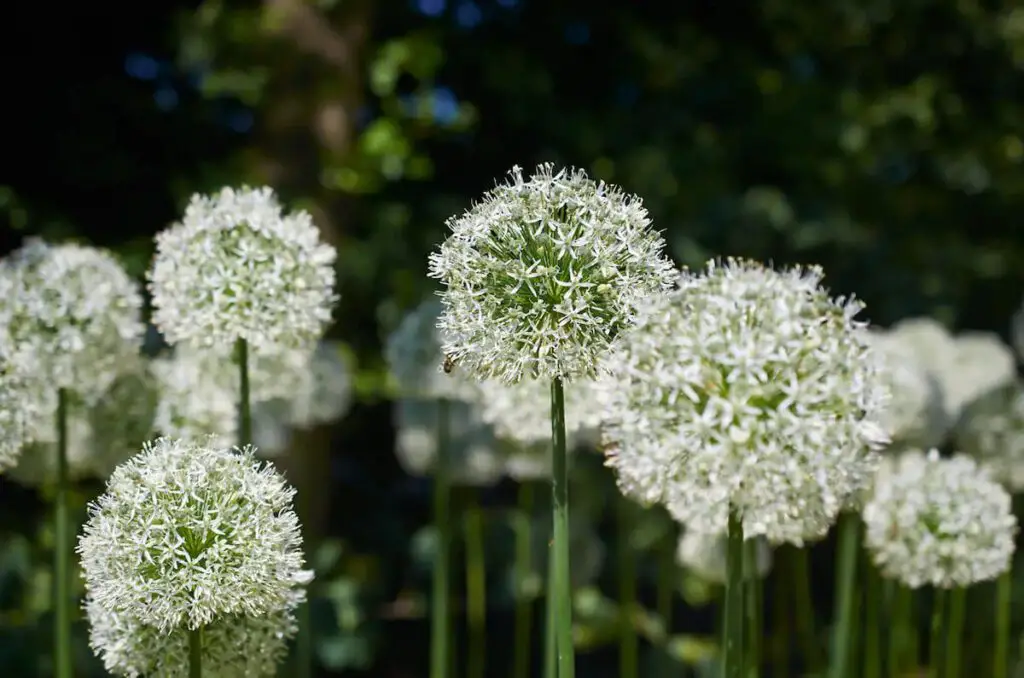
Blue color
Like the spacious blue sky or the blue vastness of the ocean, blue allium flowers symbolize open-heartedness, honesty, please, and tranquility.
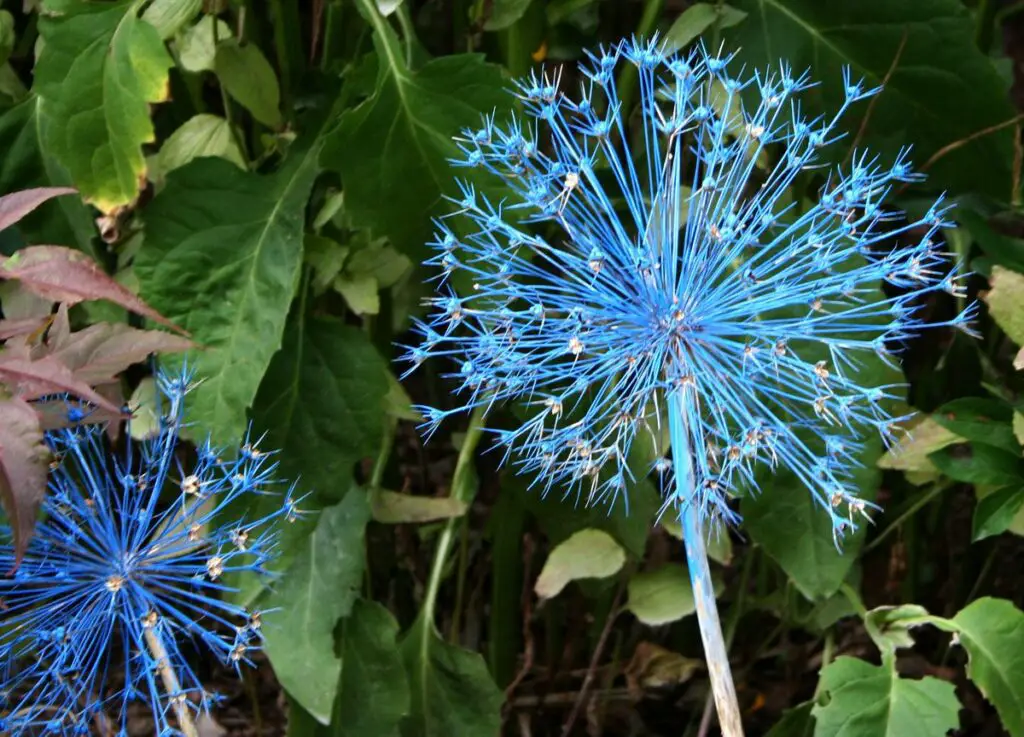
Red or Burgundy color
The red/burgundy allium flowers generally symbolize romance and passionate love. The red color is also seen as a color of excitement and courage.
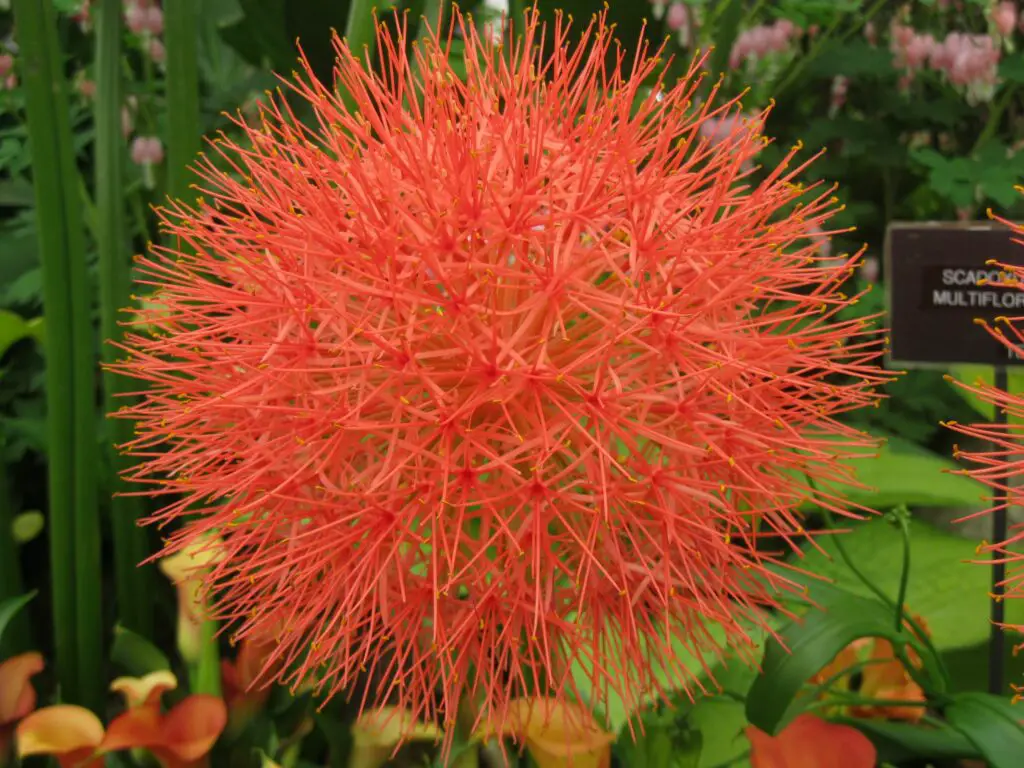
Pink color
Pink is the color of femininity and a tender, romantic life. Pink allium flowers symbolize such gentle love and affection.
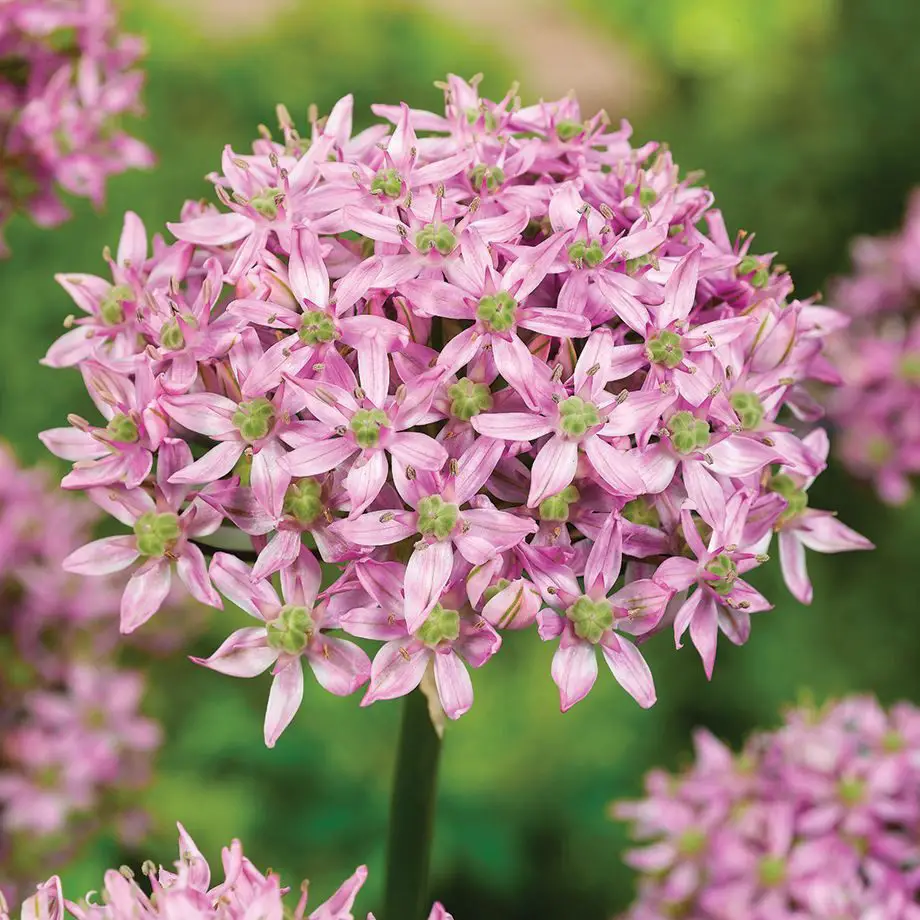
Orange color
The orange allium flowers symbolize passion and excitement.
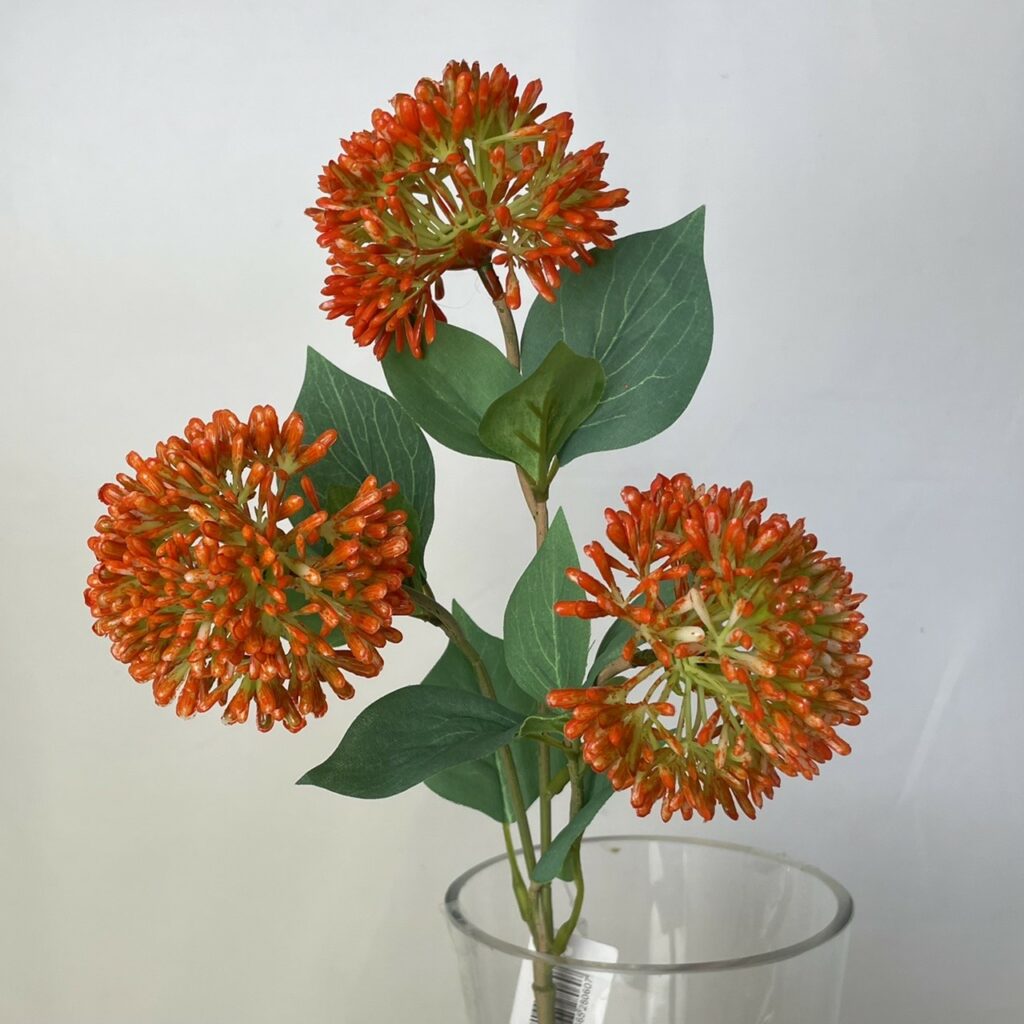
Interesting facts about the Allium flower
- Due to the strong odor, the allium flower is safe from pests, including rabbits and pesky deer.
- Allium flowers contain organosulfides which are safe for humans but toxic to pets, including cats and dogs.
- In some eastern cultures and religions (especially in Jainism and Hinduism), the use of allium is either restricted or completely forbidden.
- In the Middle Ages, some allium bulbs (especially those of Allium cepa or common onion) were considered very valuable, and people used them to pay their rent.
- The early American Dutch settlers planted Allium schoenoprasum (chives) in the fields where their cattle grazed so that the milk would be naturally flavored with the taste of this plant.
- Some matadors wore a clove of Allium sativum (garlic) on a string around the neck before and during a bullfight. Also, some sailors carried this plan on board, believing it could protect them against shipwrecks.
- All alliums have the property of lowering blood pressure.
- Two members of the allium genus—garlic and onion—have been used in traditional medicine for their antibacterial and antiviral properties. Alliums have also been used to treat asthma, anemia, and various skin conditions. There is archeological evidence that the people of Ancient Peru often used allium plants in their folk medicine.
- The early American settlers often hung Allium cepa over their doors to protect against infections. At the birth of a child, Greek midwives made the whole room smell of allium, as they believed in the plant’s protective powers.
- There is a superstition that an allium flower bulb can be used as a type of oracle. After a question is asked to which the person seeks an answer, one bulb is put aside for every possible outcome. The bulb which sprouts first provides the answer to the question.
- A myth from the Hindu tradition tells the story of Sachi, God Indra’s wife, who tried to taste the nectar of immortality. The nectar was too strong for her, and she spits it out. Where the nectar fell on the ground, the allium flower blossomed.
- In Poland, the flower stalk of Allium Porrum (leek) used to be planted in the hands of the statues of Jesus the Savior. The allium flower was the reed given to the Savior at the time of the Crucifixion.
- According to an Arthurian legend, the Land of Astolat was the place of Elaine’s castle. This lady died of a broken heart because her love for Sir Lancelot remained unrequited. Due to this legend, one variety of allium flowers—Allium oschaninii or eschalot—symbolizes unrequited love.
How to grow Allium flowers
Although hybrid alliums can be grown from seed, you may have to wait a year or longer for them to bloom.
- The allium bulbs should be planted in the fall, just before the ground freezes. With the spiked end up, plant them twice as deep as the bulb’s height.
- Generally adaptable to soil types; however, it’s crucial to remember that they require well-drained soil.
- Avoid moist areas since they can cause rotting, especially when they are dormant.
How to care for Allium flowers
- Trim the flower scapes when they wilt, keeping the stem as short as possible.
- Only remove leaves that have begun to turn yellow, as the bulb is accumulating nutrients for the forthcoming flowering cycle at that stage.
- There is no need for fertilizer.
- Remember to frequently water allium plants in pots because they require more water and dry up faster.
Best time to gift Allium flowers
Allium makes excellent cut flowers for fresh and dried bouquets due to their long, tall stems, various shapes, and brilliant colors.
Because the core of an allium flower is unity, these exquisite flowers are great gifts for commemorating a wedding anniversary; such a gift acknowledges their strong bond. White allium flowers are popular for special occasions such as weddings and baptisms.
A red or pink allium flower is the perfect Valentine’s Day gift for that particular someone.
Conclusion
Despite being called an “ornamental onion,” the allium flower is remarkably different. Although this flower stands out from the crowd due to its distinct perfume, its vast range of colors and its profound meanings and symbolism make it an ideal flower to give as a gift to your loved ones.
The allium flower symbolizes the goodness of life and the beauty of humility. Because of how they develop, they also signify unity, making an excellent flower option for a loved one.
If you want to know and learn more about flowers, we at PansyMaiden can help you. Check out our fun, easy-to-read, and informative flower-related content that you will surely enjoy!
